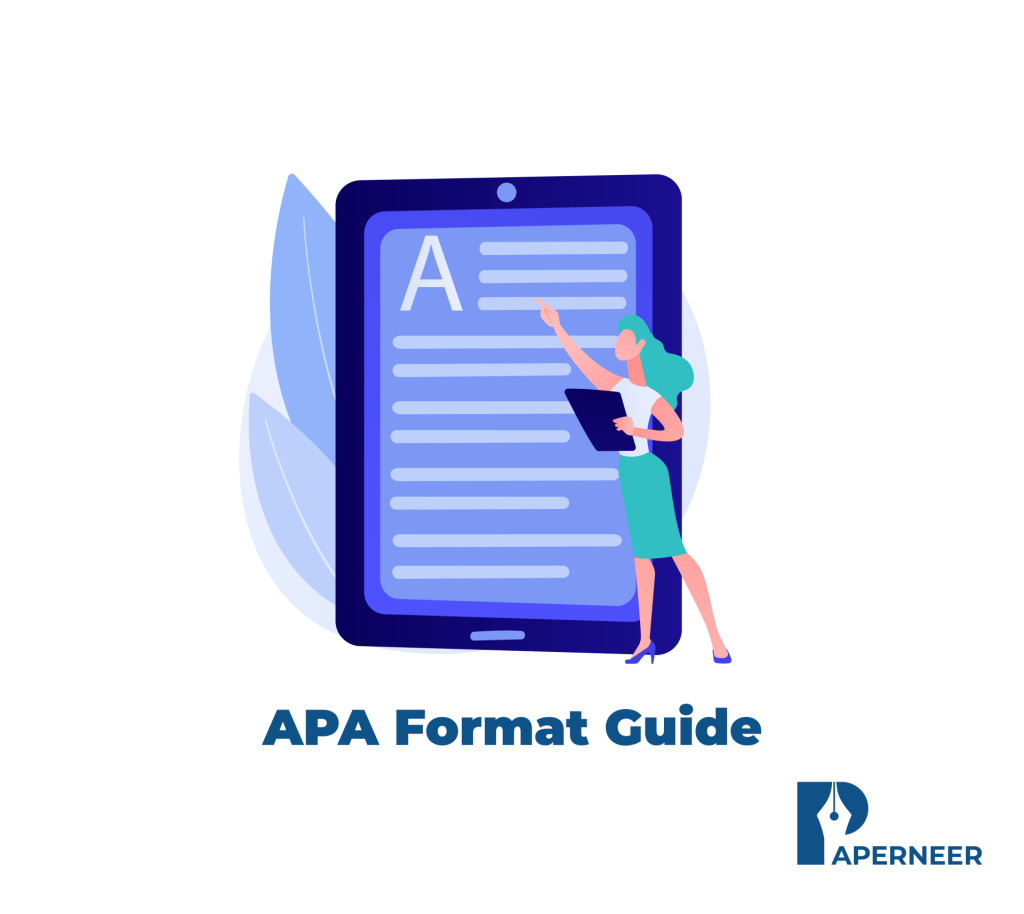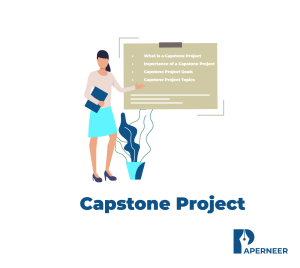Capstone Project – A Complete Guide A capstone project is sometimes the...
Read MoreAPA format guide: Complete Structure and Example

APA format is necessary for college kids and researchers, giving a homogenous approach to writing and structuring educational papers. Wide utilized in social sciences, psychology, and education, the APA format ensures clarity, uniformity, and correct citation of sources. During this APA format guide, we’ll explore its fundamental principles, together with data format rules, citation tips, and sensible tips to make your work stand out.
In this blog brings you:
What is APA Format?
APA format may be a set of rules and tips that help authors gift their analysis exceedingly consistently and skilfully. It covers numerous aspects of writing, including:
- Citation of sources.
- Paper structure.
- Formatting of in-text citations and references.
- Presentation of tables, figures, and headings.
Originally designed for science papers, the APA format is normally employed in fields like education, sociology, business, and health sciences. It provides an identical framework that ensures clarity, improves readability, and facilitates effective communication of concepts. By adhering to those tips, authors will enhance the believability and impact of their work while maintaining educational integrity.
Key Components of APA Format
General Paper format
- Font: Use 12-point Times New Roman, 11-point Arial, or 11-point Calibri.
- Margins: Set 1-inch margins on all sides.
- Spacing: Use typing throughout, as well as the page and reference list.
- Page Numbers: embrace page numbers within the top-right corner of each page.
Title Page
The page includes:
- Title of the paper (centered and bold).
- Author’s name.
- Institutional affiliation.
- Course name and range.
- Instructor’s name.
- Submission date.
Structuring an APA Paper
Abstract
The abstract provides a quick outline of the paper’s content. It ought to be:
- 150–250 words long.
- They are written on a separate page when the page.
- She was accompanied by the heading “Abstract” (centered and bold).
Main Body
The main body of the paper contains the following sections:
- Introduction: Gift the analysis question and thesis statement.
- Methodology: Describe the ways employed in the analysis.
- Results: Summarize the findings.
- Discussion: Analyze the implications of the results.
References
- The reference page lists all sources cited within the paper. Key rules include:
- Start the page with the heading “References” (centered and bold).
- List entries alphabetically by the authors’ last names.
- Use a dangling indent for every entry.
In-Text Citations in APA Format
Parenthetical and Narrative Citations
APA format uses two forms of in-text citations:
- Parenthetical: (Author, Year)
- Example: (Smith, 2021)
- Narrative: Author (Year)
- Example: Smith (2021) argues that…
Quotations and Paraphrasing
Direct Quotes: embody the pagination.
- Example: (Smith, 2021, p. 45)
- Paraphrased Ideas: The square measure of page numbers is not mandatory but is counseled.
Formatting Tables and Figures
Tables and figures facilitate gift information effectively. Key rules include:
- Place titles higher than tables and figures (in italics).
- Include notes below to clarify Information or abbreviations.
- Mention all tables and figures within the text before they seem.
APA Heading Levels
APA uses five levels of headings to arrange content:
- Level 1: Targeted, bold, title case.
- Level 2: Left-aligned, bold, title case.
- Level 3: Left-aligned, daring italic, title case.
- Level 4: Indented, bold, title case, ending with an amount.
- Level 5: Indented, daring italic, title case, ending with an amount.
Tips for Writing in APA Format
- Proofread Thoroughly: Guarantee your paper is freed from grammatical errors and information inconsistencies.
- Use Citation Generators: Tools like Zotero or EndNote will save time.
- Follow Updated Guidelines: Use the most recent edition (7th) of the APA Manual.
- Practice Consistency: Maintain uniformity in citations, headings, and references.
Common Mistakes to Avoid
- Incorrect Citations: Guarantee all in-text citations match the reference list.
- Improper Formatting: Follow the font size, spacing, and margins foundations.
- Missing Information: Ensure for missing page numbers or dates in citations.
Why Use APA Format?
Using APA format is crucial for maintaining consistency, believability, and expertise in tutorial writing. It provides a regular structure for presenting analysis; ensuring readers follow your ideas and find cited sources. This is often particularly necessary in fields like scientific discipline, education, and social sciences, wherever clear communication is vital.
APA format promotes tutorial integrity by accentuating correct citations of references and avoiding plagiarism. It also ensures uniformity in format components like headings, margins, and spacing, contributing to an elegant and arranged presentation.
Moreover, adhering to APA pointers enhances your work’s readability, making it accessible to a world audience at home with this vogue. It reflects your attention to detail and understanding of educational conventions, which might strengthen your believability as an investigator.
Following the APA format in skilled and tutorial contexts demonstrates respect for established standards and facilitates effective communication within your discipline. By mastering the APA style, you improve your writing and guarantee that your work meets the expectations of educators, publishers, and peers.
Conclusion
Mastering the APA format is crucial for tutorial success because it equips students and researchers with the tools to gift their concepts clearly and professionally. Tutorial writing usually needs an identical approach, and APA Vogue offers a structured framework to confirm your work meets the expectations of educators and peers. By following the rules in this APA format guide, you can manufacture papers that aren’t only well-organized and align with the best tutorial standards.
APA format extends on the far side simply citation rules; it encompasses the general structure of your paper and the page, abstract, main body, and references. It ensures that your arguments are bestowed in an exceedingly logical flow, making it easier for readers to interact with your content. Using standardized headings and subheadings enhances clarity, guiding readers through advanced concepts step by step.
Whether it’s your 1st-time mistreatment APA vogue or trying to refine your skills, the following pointers and techniques can assist you in navigating the method confidently. Beginners may realize the design is intimidating, but following and familiarity can make it a habit. For skilled writers, purification of your application in APA format will make your work stand out even more, demonstrating your attention to detail and expertise.
Adhering to APA tips isn’t almost about meeting requirements;
It additionally fosters tutorial integrity. You acknowledge different students’ contributions by adequately citing sources while strengthening your arguments. This follow avoids plagiarism and builds trust with your readers, showcasing your quality as an author.
Mastering the APA format is an associate degree investment in your tutorial journey. It equips you with the ability to speak effectively in your field, guaranteeing your work is taken seriously and revered by your audience. With dedication and consistent effort, APA Vogue will become a valuable tool for your success.
Say goodbye to Mistakes in Term Papers
Avoid Errors in Term Papers Writing a theme may be a vital tutorial task that needs careful designing and...
Read MoreUnraveling the Stories: Autobiography vs Biography
Autobiography vs Biography Understanding the excellence between autobiography and biography is crucial for...
Read More




